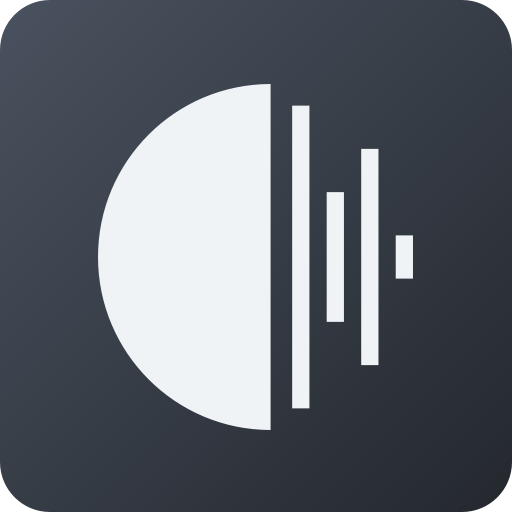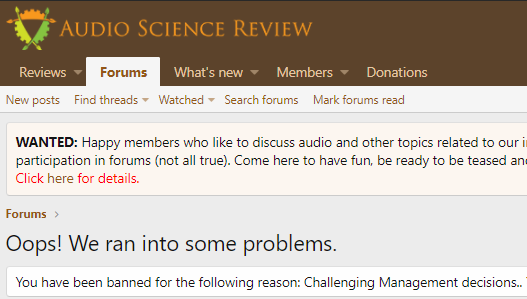Excellent points. But why bother with this, if this is not your objective in the hobby? just pull out the old McIntosh transport, and it annihilates the Taiko - just like Valin describes:
"...Switching over to hi-res streaming via Qobuz was, once again, a shock. I'm used to streaming; I've grown to like it (or, at least, to tolerate it). But in comparison to the physical disc, the sound of the Qobuz stream of Blues for the Soul through the Dream-Play XC DAC was like the taste of a glass of 2019 Chateau De Beaucastel Chateauneuf Du-Pape Hommage à Jacques Perrin into which some fool has poured an equal amount of tap water. Everything was weakened, watered down, diluted in color, flattened in body, made ordinary, listless, digitally flavorless. ..."
But as I mentioned, Audio is a very personal and subjective hobby: we all have different experiences that we bring and base our judgments on, and we have different goals for our enjoyment.
Thank you. The main reason they are excellent points is that Valin’s points are only correct for a non-audio-optimised network.
Networks were originally designed to move data files from one point to another, say from a storage device to a client server or cpu. Thought was given to speed, cost and data integrity of the final file. It was no problem if there were errors along the way, as long as the final file was a bit perfect copy of the original, the goal was met. Audio, it turns out is a very different kettle of fish, but few have actually recognised that fact. In audio, the quality of the bits arriving at the client plays a HUGE role in the quality of the final sound, the DAC produces. It helps if the file is bit perfect but that’s really only one of many considerations. The voltage structure of the actual bits, how accurately and perfectly they achieve the polarity switches (or not), how much voltage noise is included, how many timing errors are included etc. In other words, how perfectly the bits of the data stream are structured or stated in networking terminology, how perfect the physical layer of the final bit stream is. It turns out that a network can be structured to move audio files around, just like the initial network design committees intended. It can be done cheaply and easily using consumer grade electronics to convert and transmit the bitstream and the resulting network will function flawlessly, producing music just like Valin reports.
But, BUT, the network can, in addition, be structured to IMPROVE the quality of the physical layer and thus the quality of the final sound produced by the DAC and believe me, those differences can be huge. Those differences can take a watered down digital rendition of the music, as reported by Valin and improve it to the point it completely blows away the best Analog or Digital in EVERY aspect. Dynamics, detail, imaging, sense of realism, creation of an acoustic venue, feelings and emotions, pace, rhythm, timing, sense of complexity, physical presence, everything.
So how is a network structured to achieve such a miraculous result? The answer is based on network design logic. Let’s say you replace a really poor Puma chipset-based router with something better based on say Broadcom chips. Most halfway decent systems will show a considerable improvement in sound quality. In order to achieve that, that improvement at the router has to pass through the rest of the network components….bridges, switches, servers, streamers etc before it gets to the DAC. This has PROFOUND implications. For that improvement to pass through all the other other components, the network has to operate on a Better in = better out basis. The better the incoming bitstream, the better the outgoing bitstream, in terms of the sound quality it produces. Further, it means that every component within the network has an effect on the final sound quality. It turns out that any improvement in noise reduction, jitter reduction etc can be heard in the final sound. Improve the power supply to a modem or router, or a bridge, or a server and the improvement can be heard as an improvement in sound quality. There are literally millions of piecemeal anecdotal reports about this on every hi-fi forum on the internet. But that’s not all. Far from it!
Let’s say you improve the accuracy of a clock in the router, reducing timing errors. You MAY hear a small difference or maybe not. It depends on what comes later on in the bitstream. If you take an output with a 10 ppm clock accuracy and feed it into a downstream device with a 100ppm accurate clock, you have essentially reset your bitstream clock accuracy to 100pm ie you have lost the benefit of a 10ppm clock. To improve network sound quality, it’s essential that what is constructed is an ‘improvement cascade’ where every component has the same or better performance than the preceding components. That way, you maximised the Better in = Better out aspects and every stage improves the quality of the data stream’s physical layer as it flows through the network.
The biggest difference between an analog and a digital signal is that an analog signal can only deteriorate…ie you can add but not remove noise, whereas with a digital signal, which is converted and resynthesized multiple times, the data stream has the potential for major improvement. Not only that, but the better in = better out aspect means that in an improvement cascade, improvements early in the network keep improving at all later stages, exactly like compounding interest.
I built a network exactly using these principles and i was stunned by the results. There was no law of diminishing returns that I ever found and the resulting sound quality was truly mindblowing.
It turns out that ALL sources of noise have a negative effect on sound qualty. Timing, power supplies, component vibration, EMI, RFI, error correction etc. Galvanic isolation works to reduce electronic noise, better clocks reduce jitter and therefore phase noise, reducing non-audio network traffic by isolating the audio stream from the rest of the domestic network, using low impedance, star earthed cable screening, components optimised for low EMI etc. will all have an effect. Arranging them in an improvement cascade means that the final bit stream hitting the DAC has as perfect a physical layer as you can make and the difference that makes in sound quality is huge
He
Think of network noise as Valin’s water diluting his wine and you get the idea. By the time I’d completed my entire network optimization I was getting sound quality that I never believed possible from digital or from 2 channel stereo of any type. The completeness and believability of the 4 dimensional music the system could produce can only be heard to be believed. Its ability to generate intense feelings and emotions is utterly compelling and completely addictive.
So I’m certain what Valin reports is what he heard. No doubt whatsoever. BUT my point is, it doesn‘t have to be that way if you put as much emphasis on perfecting the network in ways I have outlined as you put into the rest of the system.



















